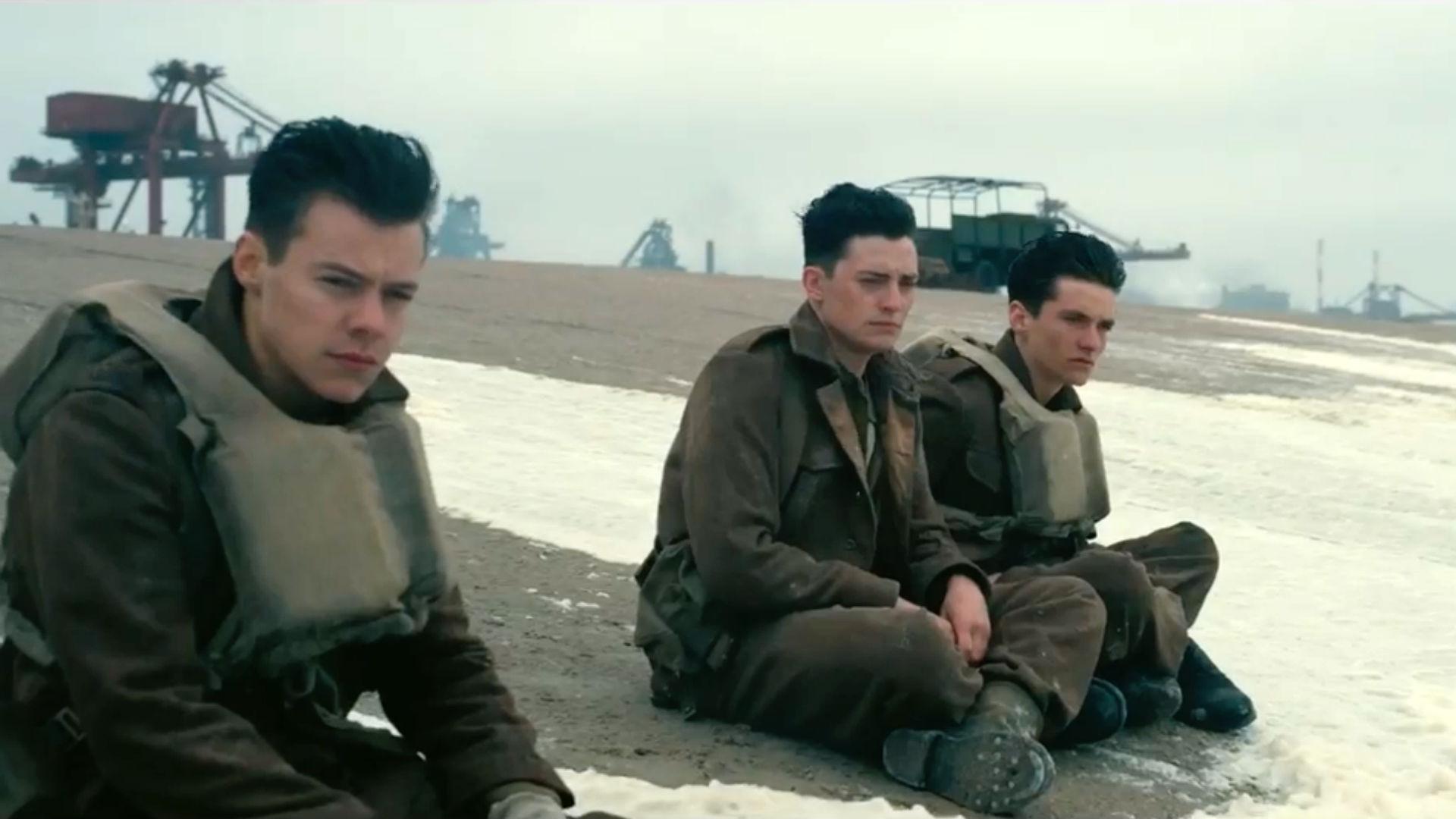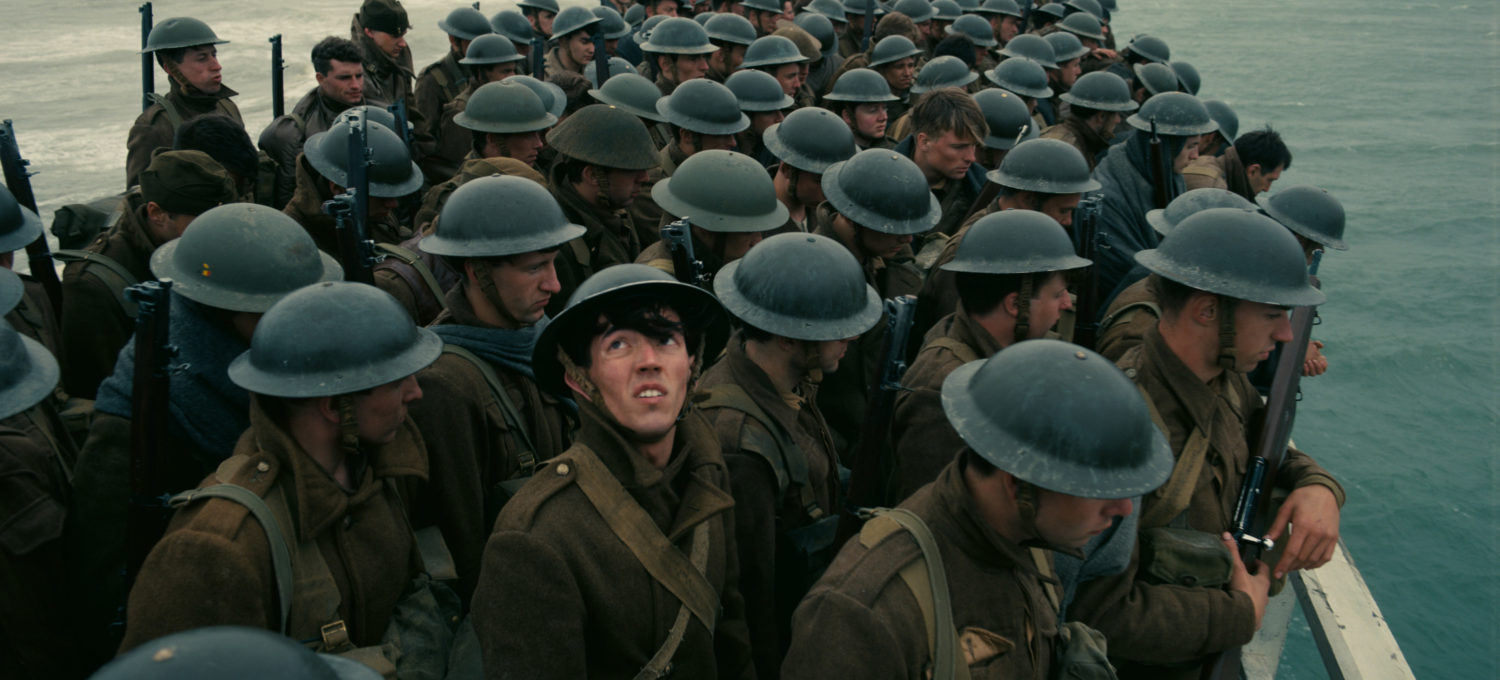Some thoughts on Dunkirk, director Chris Nolan’s masterful war film portraying the events of the evacuation of more than 388,000 Allied troops from Europe in 1940. If you’re not familiar with the history, as most of us Americans aren’t, since it happened before we entered World War II, take a look here.
- The short of it was the British and French armies had their backs to the sea and were completely surrounded by Germans. Stuck on a wide, shallow beach with no deep water port for evacuation, they were easy pickings for German planes and artillery. Just in the nick of time, some 700 civilian boats came across the English Channel and ferried them to safety. If this fleet of fishing trawlers, ferries, and pleasure yachts hadn’t come to save the British army, Germany would likely have commenced an invasion of Britain immediately and history would have been quite different.
- As a film, Dunkirk is both a tribute and thrill ride; it manages to be both rhapsodic and pulse pounding all at once. Strong comparisons can be made to Saving Private Ryan, which acts as its emotional and historical bookend. Both films capture the horror of war without overly romanticizing it. Dunkirk keeps its PG-13 rating by avoiding some of the blood and gore of Saving Private Ryan. The images of soldiers under fire on the broad beaches of France and Belgium will look familiar. But the tone is dramatically different, as D-Day was about a victorious offensive action that led to the defeat of the Nazis. Dunkirk was about keeping enough troops, sailors, and pilots alive in the midst of a harrowing defeat to fight another day.
- If you’ve followed the development of Dunkirk as a film, you may know it is being offered in multiple projection formats. Nolan shot the movie in 70 mm IMAX. This means actual film was spooling through an actual camera and then was developed, copied, and sent to actual film projectors at theaters where light passed through the flickering pictures to show an actual image on the screen. It’s an old concept but a good one.
- After seeing Dunkirk in “Liemax” at a local megaplex (that is, an IMAX-branded digital projection on a one quarter-size “IMAX” screen) I decided to go for the Full Monty and see it again in 70mm film projection at the massive IMAX screen at AMC Metreon in San Francisco.
- The first difference I noticed with the real film projection was hearing this strange flickering sound from the projection booth. Like the sound of a dialup modem or the click-clack of a typewriter, I thought the sound of the film projector had been lost to history. I had also forgotten the way words on a black screen vibrate with life during a projected film. Overall, the real film picture was both softer and more detailed. It did lack a little of the clarity of the digital. It was a bit like comparing the cold but exact sound of a digital recording with the warmer, but less sharp sound of vinyl. On the massive IMAX screen, the dogfight scenes between the RAF and the Luftwaffe were lose-your-lunch immersive. The sound effects and the layered, tick-tocking score by Hans Zimmer were fantastic in both theaters–perhaps a little less ear-bleedingly loud in the larger IMAX theater, which might have simply been because it was a bigger room.
- So the verdict is: If you can see Dunkirk on 70mm film, do it. But whatever you do, see it soon on the biggest screen possible. When it comes out on DVD and streaming, a significant part of the storytelling will be lost.
- Hollywood will inevitably get the wrong message from the success of Dunkirk’s super large format. In an industry that has become bloated with blockbusters and eternally unspooling sequels, studios will try any gimmick they think will get people in the door. What Hollywood never realizes is the effects of a film should be in service of the story.
- You can see this in the way studios exploited 3D to ever-diminishing returns. 3D made sense for Avatar and for Prometheus because it added something to the narrative. By the time you have the Smurfs and the Emoji Movie in 3D, you have lost any narrative value attached to the effect. Using a large format for Dunkirk immerses you in the visceral experience of war, and counterintuitively, makes an epic story seem more personal and intimate. But Hollywood will just think Dunkirk means bigger is always better. So stay tuned for the next Transformers or Spider-Man in 70 mm.
- People have faulted Dunkirk for a lack of character development and using actors that are difficult to tell apart. New York magazine reviewer Kyle Buchanan calls it a film for “people who like to see beautiful British men suffer,” and has offered a guide for telling the difference between all the actors with high cheekbones. (Buchanan: “War is full of unimaginable horror, but jeez, these men are pretty.”)
- I don’t know if this was Nolan’s intention, but in casting some relative unknowns, he avoided a lot of war movie clichés. The classic war movie has a company of identifiable stars playing One of Each of Us—the gruff but caring sergeant from Brooklyn, the Iowa farm boy, the hillbilly who became a crack shot by picking off squirrels on his daddy’s farm. There are pictures of the sweethearts back at home and sepia-toned shots of worried mothers with an American flag hanging outside the house and a gold star in the window. As if we can’t possibly identify with these soldiers unless they prove they’re heterosexual and have mothers.
- I had no problem identifying with the characters. I could see the terror in their eyes and their desperation to survive. They reacted out of the best impulses of human bravery and the worst instincts of animal fear—often at the same time. The early scene where the lead character Tommy (Fionn Whitehead) and the French soldier Gibson (Aneurin Barnard) pick up a wounded man’s stretcher and make a run for the hospital ship is both an act of bravery and cowardice. Yes, they’re trying to save a wounded soldier, but they’re also trying to jump the line and get themselves off the beach. I don’t think I’ve ever seen a war movie that portrayed the muddled motivations of human behavior under fire in such stark detail. The relative anonymity of some of the actors gives the impression that those who made it off the beach did so out of sheer dumb luck rather than any special skill as soldiers.

Hardly a day at the beach–the young stars of Dunkirk: (L-R) Harry Styles, Aneurin Barnard, Fionn Whitehead.
- The film was also notable for not showing any Germans. This may have been a practical decision on Nolan’s part, as displaying symbols of Nazism might have caused the embarrassing spectacle of Trump supporters interrupting the movie with Sieg Heils. (Sorrynotsorry.)
- Not seeing the enemy also had the terrifying effect of knowing that death could come at any moment in the form of a sniper, a torpedo, or artillery. The most frightening scene in the film involved young infantrymen sitting in an abandoned Dutch trawler waiting for the tide to come in to take them out to sea. As the boat came under fire, while simultaneously filling with water from the bullet holes, the phrase “shooting fish in a barrel” came to mind.
- Mostly I was struck by how the fate of the free world rested on the slight shoulders of a bunch of teens and twentysomethings. Kids whose acne had yet to clear up and who had only just learned to shave. The same age as the undergrads I teach who shake in their sneakers while giving a 3 minute presentation in front of a class. The larger message can’t be hammered home enough. Although World War II was supposed to be a “good war,” and our histories tell us all who fought did so valiantly, the soldiers were the same age as the kids that got sent to Korea, and Vietnam, and Iraq and Afghanistan, and every other questionable conflict since then. Wars are waged by old people and fought by young people. That’s the sad and awful truth.
- There’s also a larger moral question here about how we portray war. NPR reviewer Chris Klimek asked, “Is it ethical to make a war movie this beautiful?” The question persists if every war movie is, in essence, a pro-war movie. I call this the “I wish I had been there” effect. I have never had aspirations to join the military. I have never shot a gun or done intentional physical violence to another person, but I found myself watching Dunkirk going, “I wish I had been there.” The dogfight scenes were awesome, and if there had been a Royal Air Force recruiter outside the theater, I probably would have joined up on site. Forgetting that I have terrible eyesight and zero reflexes, I was pretty sure I could fly a Spitfire by the end of the movie.
- Many Christian theologians have struggled with “Just War Theory.” That is, are there any situations where a war might be called “just” or “good”? The answer is generally no, as all wars represent great sin and lead to the suffering and death of innocent people. Perhaps we could also ask if there is a “Just War Movie Theory.” Much film censorship is based on the idea that if young people see something on screen, they will emulate that behavior in life. So showing drug use will lead young people to want to try drugs. Or showing sex will cause them to want to have sex. Based on this theory, should we allow young people to watch war movies? Will watching wars make them want to fight wars? At the very least we have to struggle with what we are celebrating when we watch war on film. Is it valor and the indomitable human spirit? Or is it violence and the pleasure of power and destruction?
